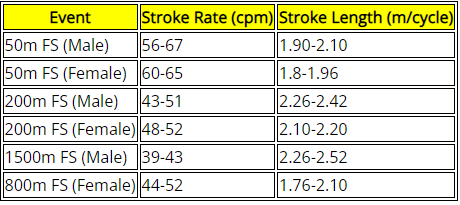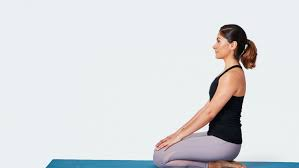At our club swim on Tuesday, we were all waiting to start the main set as the first 2 lanes (the slowest ones) were all chatting.
They were comparing watches and swim settings rather than actually doing any swimming - I did comment that there has never been a more triafalete scene.
My swimming is really improving fast. Another great set
5 x 100 20 RI
250 drills (kicking)
4 x 50 fast 15s RI
400 race pace
5 x 100 20 RI
3 x 100 race pace 50 fast
5 x 50 fast
1:41 on the 400s felt really sustainable. Definately not pushing. Was aiming for 1:30 on the 50s but pretty consistent at 1:32
Swim technique has totally changed since september. Today the 400s were at 52-53spm. The 50s at 61-62spm. Last season, i was swimming around 1:55 @ 70spm. I am becoming much more efficient, but am getting concernes about slow turnover
As you’re all aware, I am not a swimmer, but I don’t get where having a high SPM is seen as such a positive. Warching Florian Wellbrock at the Olympics and his was pnly about 60 SPM.
You’re improving so looks good to me.
A slow turnover is really helping me concentrate on my arms and legs. Rather than windmilling around, I am able to feel what what is happening, as a result my stroke rate is decreasing and speed is increasing. However, I probably now need to focus on gradually increasing stroke rate, without increasing fatigue, in order to get faster. Feels like a balancing act.
I just had a look at my stroke rate after my 4x500 this week. Average for the session was 50 spm. Stroke rate didn’t change that much, just increase in power through the stroke. Last week avg stroke rate was 48. My garmin doesn’t measure spm for each internal but I do get avg swolf. The previous week I swam a 1500 (threshold) swolf was 31, then a few 100m max efforts and the swolf was 27. I’d guess my stroke rate is similar but lower swolf as I’m quicker. Though faster cadence on shorter distances probably makes sense to me - though others will know better if that’s correct. If I was you and focusing on longer distance, I’d be working on good form, smooth stroke, low spm, max power.
Garmin measures stroke cycles, it only counts one arm pull , so thats suggesting near 100spm which is very high??
Swolf I count 50s in a 25 pool, rather than single lengths.
Yeah I doubled the value from garmin for the spm.
I have some old videos of me swimming when I was younger and faster. I was going to look at spm/swolf but it was over long course so not a fair comparison.
You definitely need to look at slowly increaaing that whilst holding the distance per stroke. Just do a pre main as a focus on stroke count with a tempo trainer to start and gradually up the rate weekly , incorporating it more into main set as well once you are holding the new rate for say 16x25 and holding the same number of strokes per length
What is a good target range for long distance vs short distance? This year I’d like to improve my shorter distance (4/500m} times.
So I’ve got my first sprint aquathlon in 2 weeks and so today managed to get to the pool and do what I wanted to be my final ‘time trial’ type effort. For the 750m I clocked 17m 01. On the plus side, I held what felt like good (for me) freestyle form and pace for the first half, and only needed to do 200m breaststroke and then finished with more free. It was about 2min faster than when I struggled through a full 750m free a few weeks ago.
On the down side, it was 1min slower than my PB (which is 100% breaststroke) and every breaststroke length I did was 2-3 seconds a 25m length quicker than my freestyle.
Looking at the event’s 2020 results that would put me about third last in the swim - I’m ok with that, it’s my first one, but I would like to do the best I can.
I know long term I probably need to bite the bullet and join a club and get some coaching sessions (just need a bit more confidence to actually turn up knowing I’ll be the worst, as well as some money!) to make serious improvements. But for this first race, should I just do what’s going to be quickest, or is that a bit of a false economy if psychologically I’m still being reliant on my breastroke and not truly committing to getting my freestyle up to scratch?
Sorry for the ramble. Think I’m getting nervous about how much of an embarrassment my performance is going to be ![]()
Very little between the two as 400 is a distance event swimming wise. It really depends as sometimes its best to “do no harm” but I like to raise upto minimum 70 over time with any juniors much lower than that.
I did a quick test on my lunch. After the warm-up I tried to keep the effort similar.
6:18 - warmup: slow cadence (including drills) 143 strokes, swolf 33
5:29 - high cadence, 149 strokes, swolf 30
5:38 - slow cadence, 144 strokes, swolf 31
5:44 - high cadence. 158 strokes, swolf 31
5:53 - slow cadence, 152 strokes, swolf 32
Although I slowed down during the set, the higher cadence does look to be quicker. What sort of stroke rate/swolf is a good ball park to aim for?
SR, depends where you are as it could affect the systems you are using when training but look to get up to 70 as an average benchmark.
Thanks I found an old post from Alan Couzens re stroke rate which has a calculator Stroke Rate Calculator | Alan Couzens

Based on my swim today, my stroke rate was 33 cpm (2 m/cycle stroke length) when I tried to increase my rate, compared with 30 cpm (2.2 m/cycle stroke length) when cruising.
From a random 100 max I did the other week, stroke rate was 32 cpm and 2.5 m/cycle
From a sprint pool triathlon, stroke rate of 33 cpm and length of 2 m/cycle.
As you say, I’m a long way off! Might go to the pool again tomorrow and try a couple of 100m or 50m efforts and try to push the rate.
It was CSS test night with the tri club tonight.
Results from previous test were 400m in 6:17 and 200m in 3:06. I led the lane. This was in November.
Tonight I went second, set off with 7s gap behind for the the lead swimmer for the 400m and 10s for the 200m. I did the 400m in 6:01. Kind of kept pace with person in from till 200m then dropped back losing 8s. Not sure what the splits were but I definitely blew. Setting of 7s later would I have had much draft benefit? I suspect so, I don’t think I really improved 16s.
For the 200m I didn’t feel right from the start, I don’t think I was ever on 1:30 pace, got cramp and pulled up after 150m by which point I was going backwards.
This isn’t the first time I’ve had a similar blowup, years ago I went sub 6 (just) leading the lane and then about 3:06 for the later 200m.
What does this show? I’m unfit? Would it suggest I’m more fast twitch? I definitely think I perform better (relatively) at shorter distances (100m PB is 1:16 and 200m about 2:50), and that applies to running and cycling too. How do I become a steady diesel?
It suggests that a test protocol is only as reliable as its application and a busy lane is unlikely to be reliable.
I would also wonder if you swam nearer VO2 max than the second threshold causing additional fatigue. The problem with swimming is fatigue leads to a breakdown in form which also leads to fatigue building quicker.
So when swimming today was chatting to a good swimmer lady about how the pool is moving back to open sessions next week, and she said ‘I hope you don’t mind me asking, but do you ever swim just with a kickboard’. I said I don’t, and she handed me hers and told me to give it a try. Got 15m in and basically ground to a halt. As I kicked harder and faster nothing happened, if anything I felt was going backwards. I circled back, handed her it and she went ‘thought so. Fix that and you’ll be flying’. I genuinely had no idea my kick wasn’t just not making me faster, but actually potentially dragging me back (and might explain why my free is slower than my breastroke).
So naturally I’ve came straight home, bought a kickboard, and been watching videos of freestyle kicks. But it all just looks so obvious and natural that I can’t work out what I’m not doing right. Are there any small things I can try that would pinpoint the issue? Or should I just be focusing on general drills to try and fix it as a whole - starting with incorporating a few lengths with the kickboard and really focusing on what everything is doing?
I’m pretty sure at times I’m tensing and pointing my toes the ‘wrong’ way (as in towards my shins, not down), so from what I’m reading eliminating that seems a good place to start?
Ankle flexibility makes a big difference but equally kicking from the knees is bad.
Once got told that if you lie face down on your floor, basically the range of movement you have there should be your kicking in the pool.
Putting a band around your ankles can stop scissoring as well.
The swim coaches might disagree but it’s helped me a bit previously. I’m just too lazy to put the effort in these days!
One of the guys on Transitions just did the Rottnest Island swim. 21km in 7h13m.
Pretty common issue in Adults with no swim background. You need to work on increasing mobility in the ankle, it should be plantar flexion and typically toes will be pointing down to bottom of pool like two big hooks. Some simple things can help, dry land sit on your heals

or things like drawing the letters of the alphabet.
In the water you could try using fins which will help promote a better foot position and aid increased mobility.
The kick mechanics are kick from the hips, you will get some movement in the knee, don’t keep the legs rigid though. at the bottom of the downbeat the leg will be straight , a slight bend in the knee at the top of the upbeat. Practice is key, the more you do the better you will get. Don’t just use a board though, think about kicking on back, kicking on side and torpedo kick also.